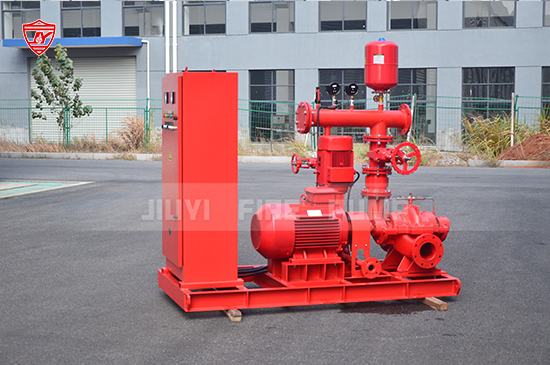Air entrapment in fire pump systems is a common yet critical issue that can severely impact pump performance and system reliability. If not handled correctly, trapped air can lead to pump cavitation, loss of prime, system failure, and non-compliance with NFPA 20 standards.

Air can enter a fire pump system during:
Initial filling of the suction line
Inadequate venting during installation
Leaks in suction piping
Improper system priming
Draining and refilling without proper air release
Air pockets reduce water flow efficiency and can lead to:
Damage to pump components
Vibration and noise
Inaccurate pressure readings
Loss of suction (prime), rendering the pump inoperable during emergencies
Intermittent pressure loss
Unusual noises (like grinding or knocking)
Vibration at the pump base
Dry running or overheating
Water hammer during startup
Install Air Release Valves:
These valves automatically expel trapped air from high points in the piping system and pump casing.
Ensure Proper Priming:
Always follow the manufacturer's guidelines for priming the fire pump, especially after maintenance.
Check for Suction Leaks:
Inspect suction piping joints, flanges, and valves for air leaks. Even small leaks can draw air into the system.
Use Vacuum Priming Systems:
For more complex systems, installing an automatic vacuum priming device can keep the pump primed at all times.
Slope Suction Piping Properly:
Design suction lines with a continuous upward slope toward the pump to allow air to migrate toward the pump and be vented.
Routine Maintenance:
Schedule regular system checks to ensure air valves and pump seals are functioning correctly and the system remains air-free.
The NFPA 20 Standard for the Installation of Stationary Pumps for Fire Protection emphasizes the importance of reliable pump operation. Air entrapment can compromise your system's compliance and effectiveness. Following best practices for air removal helps meet these standards and ensures a quick, effective response during a fire emergency.
Handling air entrapment in fire pump systems is not just about system efficiency—it’s about ensuring safety, compliance, and peace of mind. Whether you operate a high-rise commercial building or an industrial facility, regularly monitoring and maintaining your fire pump system is essential for dependable fire protection.